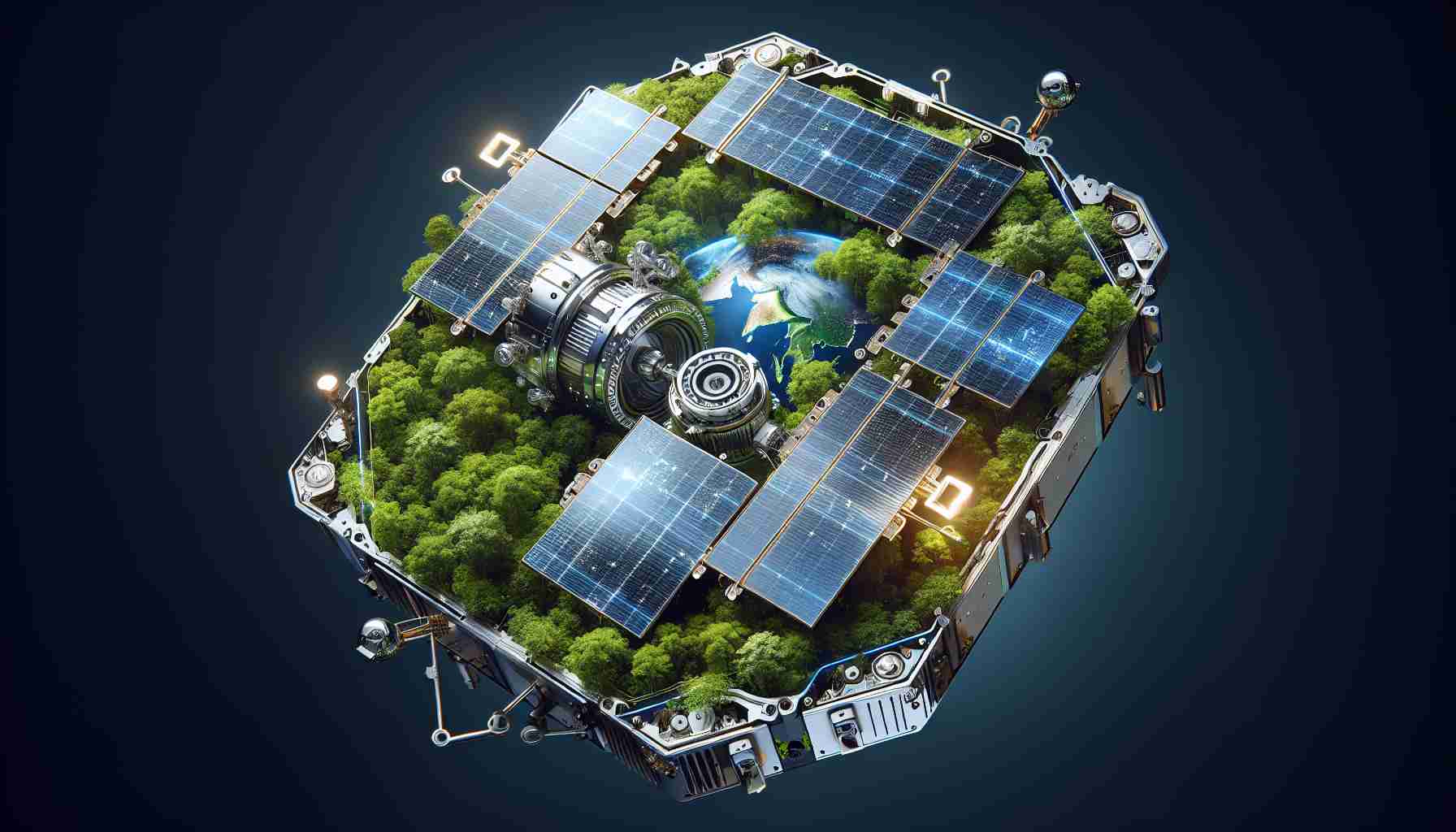
L3Harris has achieved a significant advancement in the European Space Agency’s (ESA) mission dedicated to understanding forest ecosystems and their contribution to the carbon cycle. The company has recently sent its state-of-the-art 12-meter folded rib reflector to Airbus in Toulouse, France. This reflector will be integrated into the upcoming Biomass satellite, which is a collaborative initiative led by the ESA alongside Airbus Defence and Space in the UK.
The Biomass satellite is designed to provide essential data regarding forest biomass and carbon storage, serving as a crucial tool in assessing environmental changes. The unique structure of L3Harris’s reflectors allows them to be compactly packed for launch and effectively deployed in orbit, similar to the unfolding of an umbrella.
This latest contribution is part of L3Harris’s extensive history in crafting innovative satellite antenna solutions, with numerous groundbreaking developments, such as the largest commercial unfurlable mesh reflectors.
The President of L3Harris’s Space and Airborne Systems division highlighted the company’s commitment to innovation and efficiency, expressing pride in contributing technology that supports vital climate research.
Integration of the reflector is scheduled for late 2024. The Biomass satellite’s planned launch is set for 2025, promising to enhance our understanding of the Earth’s forests and their critical role in climate regulation.
Satellite Innovation Aims to Transform Forest Monitoring
The role of satellites in monitoring forest ecosystems has seen remarkable innovation in recent years, particularly with projects like the European Space Agency’s (ESA) Biomass satellite. These technological advancements are crucial as forests play an integral role in both the carbon cycle and providing habitats for biodiversity. The evolving landscape of satellite technology not only promises to enhance our understanding of forest health but also addresses growing concerns over deforestation and climate change.
Why are satellites essential for forest monitoring?
One of the most significant questions surrounding forest monitoring is: Why rely on satellite technology instead of ground surveys? The answer lies primarily in scale and efficiency. Satellites can capture vast amounts of data over extensive areas, making them invaluable for tracking changes in forest cover, biomass, and health in real time. Ground surveys can be labor-intensive, time-consuming, and often limited to specific areas, which is insufficient for global monitoring needs.
What are the key challenges associated with satellite forest monitoring?
Despite its advantages, satellite monitoring faces several challenges. One major issue is the accuracy and resolution of the data collected. While satellites can cover broad areas, they sometimes lack the detail needed to assess forest health accurately. Additionally, atmospheric conditions can interfere with satellite observations, leading to data inconsistencies. There is also the controversial aspect of data accessibility; proprietary technologies may limit the availability of critical forest monitoring data to researchers and policymakers.
What are the advantages of using satellite technology in forest monitoring?
1. Comprehensive Coverage: Satellites can monitor vast regions that would be impractical to cover on the ground.
2. Real-time Data: They provide near real-time data, which is essential for timely responses to forest management needs.
3. Cost-effective: While initial investments in satellite technology can be high, the long-term costs of ground surveys can be significantly higher.
4. Monitoring Changes Over Time: Satellites can provide a historical record that helps scientists understand long-term trends in forest ecosystems.
What are the disadvantages of satellite-based forest monitoring?
1. Data Interpretation: The need for sophisticated algorithms and methods to interpret satellite data can lead to misinterpretations if not done carefully.
2. Technical Limitations: Remote sensing technology is improving, but atmospheric interference can affect data quality.
3. Dependence on Technology: Over-reliance on satellite data may lead to inadequate local knowledge and on-the-ground verification.
Recent Innovations and Future Directions
In addition to the ESA’s Biomass satellite, other initiatives are underway, such as the Global Forest Watch, which utilizes data from multiple sources, including satellites, to provide real-time information on forest conditions worldwide. These platforms enable better policymaking and sustainable forest management practices.
As our understanding of forest ecosystems deepens through satellite innovation, the potential for transforming forest conservation efforts grows. Organizations like L3Harris are at the forefront of developing these technologies, emphasizing the importance of satellite data in climate action.
Conclusion
The integration of advanced satellite systems into forest monitoring represents a significant step forward in our collective ability to understand and protect these vital ecosystems. As technology continues to evolve, it is essential to address the challenges and controversies surrounding it to ensure effective and equitable management of forest resources.
For further information on satellite technology and its applications in environmental monitoring, visit ESA or L3Harris.



